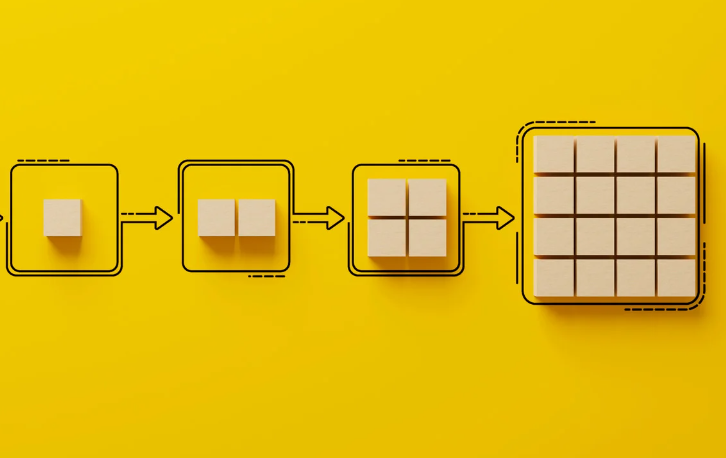Client-Centric Proposals: How to Focus on What Matters Most to Your Client
Learn how to create client-centric proposals that address key concerns, align with client values, and ensure successful collaborations. Discover strategies to enhance client satisfaction and drive business success.
Tired of nonsense pricing of DocuSign?
Start taking digital signatures with BoloSign and save money.
In today's competitive business landscape, crafting client-centric proposals has become more crucial than ever. Whether you're responding to a formal request for proposal (RFP) or proactively pitching your services, your ability to focus on what matters most to your client can make or break your chances of success. This comprehensive guide will walk you through the process of creating proposals that resonate with your clients, address their specific needs, and ultimately win their business.
Understanding the Importance of Client-Centric Proposals
Before we dive into the specifics of crafting client-centric proposals, it's essential to understand why they're so important. In essence, a client-centric proposal demonstrates that you've taken the time to understand your client's unique challenges, goals, and preferences. It shows that you're not just offering a one-size-fits-all solution, but rather a tailored approach that addresses their specific needs. Client-centric proposals are more likely to:
- Capture and maintain the client's attention
- Demonstrate your expertise and understanding of their industry
- Build trust and credibility
- Increase your chances of winning the business
The Anatomy of a Client-Centric Proposal
A well-structured proposal is key to effectively communicating your value proposition. Let's break down the essential components of a client-centric proposal:
- Executive Summary
- Problem Statement
- Proposed Solution
- Methodology
- Timeline and Milestones
- Budget and Pricing
- Team and Qualifications
- Case Studies and Testimonials
- Next Steps and Call to Action
Now, let's explore each of these components in detail and discuss how to make them client-centric.
1. Executive Summary

The executive summary is your opportunity to make a strong first impression. It should provide a concise overview of your proposal, highlighting the key points that matter most to your client.
Tips for a client-centric executive summary:
- Address the client's specific challenges and goals
- Summarize your proposed solution and its unique benefits
- Use language that resonates with the client's industry and culture
- Keep it brief (1-2 pages) but impactful
2. Problem Statement

A well-crafted problem statement demonstrates your understanding of the client's situation and sets the stage for your proposed solution.
How to make your problem statement client-centric:
- Use information gathered from client meetings and research
- Articulate the problem from the client's perspective
- Highlight the potential consequences of not addressing the problem
- Show empathy and understanding of the client's challenges
3. Proposed Solution

This section is where you present your solution to the client's problem. It's crucial to focus on how your solution addresses the client's specific needs and goals.
Making your proposed solution client-centric:
- Clearly link your solution to the client's stated objectives
- Highlight the unique aspects of your approach that set you apart from competitors
- Use language that emphasizes benefits rather than features
- Provide concrete examples of how your solution will positively impact the client's business
4. Methodology

Your methodology section should outline the specific steps you'll take to implement your solution. This is an opportunity to demonstrate your expertise and attention to detail.
Client-centric methodology tips:
- Break down your process into clear, easy-to-understand stages
- Explain how each stage addresses a specific client need or concern
- Highlight any proprietary methods or tools that give you an edge
- Show how your methodology minimizes risk and maximizes value for the client
5. Timeline and Milestones

A well-defined timeline helps set clear expectations and demonstrates your ability to deliver results efficiently.
Creating a client-centric timeline:
- Align project milestones with the client's key dates or deadlines
- Be realistic about timeframes to avoid overpromising
- Include opportunities for client feedback and collaboration
- Highlight any quick wins or early deliverables that provide immediate value
6. Budget and Pricing

Pricing can be a sensitive topic, but a transparent and well-structured budget can actually build trust with your client.
Tips for client-centric budgeting:
- Provide clear, itemized pricing that aligns with the client's budget expectations
- Offer multiple pricing tiers or options if appropriate
- Highlight the value and ROI of your solution, not just the cost
- Be prepared to explain and justify your pricing structure
7. Team and Qualifications

Introducing your team helps personalize your proposal and builds confidence in your ability to deliver.
Making your team section client-centric:
- Highlight team members with relevant experience in the client's industry
- Emphasize skills and qualifications that directly address the client's needs
- Include brief bios that showcase each team member's unique value
- If possible, mention any past interactions between your team and the client
8. Case Studies and Testimonials

Social proof can be a powerful tool in convincing clients of your capabilities.
Client-centric case studies and testimonials:
- Choose examples that are relevant to the client's industry or challenge
- Focus on results and outcomes rather than just describing what you did
- Use quotes from satisfied clients that speak to your unique strengths
- If possible, include metrics or data that quantify your impact
9. Next Steps and Call to Action

End your proposal with a clear path forward and a compelling call to action.
Creating a client-centric conclusion:
- Summarize the key benefits of your proposal
- Clearly outline the next steps in the process
- Provide multiple ways for the client to contact you
- Express enthusiasm for the potential partnership
The Art of Personalization
While having a solid proposal structure is important, true client-centricity comes from personalization. Here are some strategies to make your proposal feel tailor-made for each client:

- Use the client's language: Incorporate industry-specific terms and phrases the client uses in their own communications.
- Address specific pain points: Reference particular challenges or goals the client has mentioned in previous conversations.
- Customize visuals: Use the client's branding colors or incorporate their logo into your proposal design.
- Align with their values: If the client has stated company values or mission statements, show how your proposal aligns with these principles.
- Reference past interactions: Mention specific points from previous meetings or conversations to show you've been paying attention.
Leveraging Proposal Templates
While personalization is key, you don't need to start from scratch every time. Using a proposal template can help streamline your process while still allowing for customization.
Benefits of using a proposal template:
- Ensures consistency across all your proposals
- Saves time on formatting and layout
- Allows you to focus on tailoring the content to each client
Tips for using templates effectively:
- Start with a solid template for a proposal for a project that covers all necessary sections
- Customize the template for different industries or types of projects
- Regularly update your template based on feedback and successful proposals
- Use the template as a guide, not a rigid structure – be willing to adapt it for each client
How does BoloSign help in Sending and Managing your proposals?
BoloSign, as an eSignature platform designed specifically for small businesses, can significantly streamline the process of sending and managing proposals. Here's how BoloSign helps with proposal management, explained in a step-by-step format:
- Proposal Creation: BoloSign likely offers a proposal project template feature, allowing you to create professional-looking proposals quickly. You can customize these templates to match your brand and specific project needs.
- Document Upload: Once your proposal is ready, you can easily upload it to the BoloSign platform. The system supports various file formats, making it flexible for different types of proposals.
- Adding Signature Fields: BoloSign allows you to add signature fields, date fields, and other form elements to your proposal document. This ensures that all necessary information is collected when the client reviews and signs the proposal.
- Setting Up Approval Workflows: For proposals that require multiple approvals, BoloSign likely offers the ability to set up approval workflows. This ensures that the proposal goes through all necessary stakeholders before reaching the client.

- Sending the Proposal: With BoloSign, you can send your proposal directly from the platform to your client. This eliminates the need for printing, scanning, or mailing physical documents.
- Real-Time Tracking: Once sent, BoloSign allows you to track the status of your proposal in real-time. You can see when the client has viewed the document, which pages they've looked at, and whether they've signed it.
By using these features, BoloSign helps small businesses streamline their proposal process, from creation to signing and beyond. This not only saves time but also provides a more professional experience for your clients, potentially increasing your proposal acceptance rates and overall business efficiency. Remember, while BoloSign offers these helpful features, the key to a successful proposal lies in understanding and addressing your client's specific needs. Use BoloSign's tools to enhance your proposal's presentation and management, but always focus on creating content that resonates with your client's goals and challenges.
The Importance of Research
Creating a truly client-centric proposal requires thorough research. Here's how to gather the information you need:
- Review the RFP: If responding to a formal request for a proposal, carefully analyze the document for specific requirements and evaluation criteria.
- Conduct client interviews: Schedule calls or meetings with key stakeholders to gain deeper insights into their needs and expectations.
- Analyze the client's business: Research the client's industry, competitors, and market position to understand their broader context.
- Review public information: Check the client's website, annual reports, and press releases for recent developments or stated goals.
- Leverage your network: If possible, reach out to contacts who have worked with the client before for insider insights.
Writing Style and Tone
The way you write your proposal can significantly impact how it's received. Here are some tips for striking the right tone:
- Be professional but conversational: Avoid overly formal language that can create distance between you and the client.
- Use active voice: This makes your writing more engaging and direct.
- Avoid jargon: Unless you're sure the client is familiar with specific terms, opt for clear, simple language.
- Be concise: While your proposal should be comprehensive, avoid unnecessary wordiness.
- Use storytelling techniques: Weave a narrative throughout your proposal that keeps the client engaged.
Addressing Common Client Concerns
Anticipating and addressing potential client concerns in your proposal can demonstrate your proactivity and attention to detail. Here are some common concerns to consider:

- Risk mitigation: Explain how your approach minimizes potential risks or challenges.
- ROI: Clearly articulate the expected return on investment for the client.
- Implementation challenges: Address potential obstacles and how you plan to overcome them.
- Ongoing support: Outline your post-project support or maintenance plans.
- Scalability: If relevant, discuss how your solution can grow with the client's business.
Follow-Up Strategies
Your client-centric approach shouldn't end when you submit the proposal. Follow-up is crucial for maintaining engagement and addressing any questions or concerns. Here are some effective follow-up strategies:

- Timing: Wait a few days after submission before following up, unless the client has specified a different timeline.
- Method: Choose a follow-up method that aligns with the client's preferences (email, phone call, in-person meeting).
- Preparation: Be ready to discuss any aspect of your proposal in detail.
- Openness: Express willingness to adjust or refine your proposal based on feedback.
- Next steps: Clearly communicate the next steps in the process and any actions required from the client.
FAQ
- What is a client-centric proposal?
A client-centric proposal is a document tailored to address the specific needs, challenges, and goals of a potential client, focusing on what matters most to them rather than using a one-size-fits-all approach.
- Why are client-centric proposals important?
Client-centric proposals are crucial because they demonstrate your understanding of the client's unique situation, increase your chances of winning business, and help build stronger, long-lasting client relationships.
- What are the key components of a client-centric proposal?
The key components include an executive summary, problem statement, proposed solution, methodology, timeline, budget, team qualifications, case studies, and a clear call to action.
- How can I make my proposal more client-centric?
To make your proposal more client-centric, conduct thorough research, use the client's language, address specific pain points, customize visuals, align with their values, and reference past interactions.
- Is it okay to use a proposal template?
Yes, using a proposal project template can be effective as long as you customize it for each client. Templates can help ensure consistency and save time, allowing you to focus on tailoring the content.
Conclusion
Creating client-centric proposals is both an art and a science. It requires a deep understanding of your client's needs, a structured approach to proposal writing, and the ability to personalize your message effectively. By focusing on what matters most to your client – their challenges, goals, and unique context – you can create proposals that win business and lay the foundation for strong, lasting partnerships.
Remember, a truly client-centric proposal goes beyond just responding to a request for a proposal. It demonstrates your commitment to understanding and addressing your client's needs, positioning you not just as a vendor, but as a valuable partner in their success. By implementing the strategies outlined in this guide, you'll be well-equipped to create proposals that resonate with your clients, differentiate you from competitors, and ultimately drive your business forward.
So the next time you're faced with a proposal request, approach it as an opportunity to showcase your client-centric mindset and win not just a project, but a long-term relationship.

Paresh Deshmukh
Co-Founder, BoloForms
13 Aug, 2024
Take a Look at Our Featured Articles
These articles will guide you on how to simplify office work, boost your efficiency, and concentrate on expanding your business.


